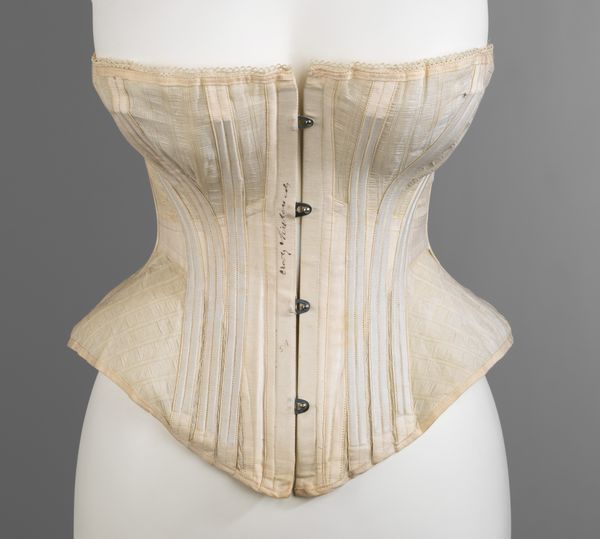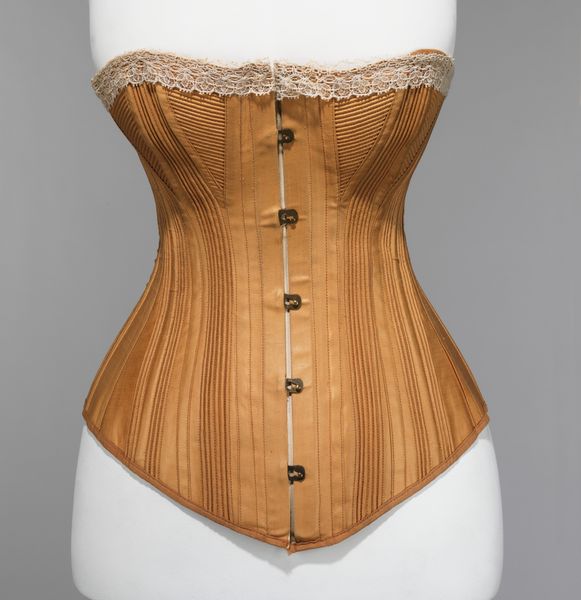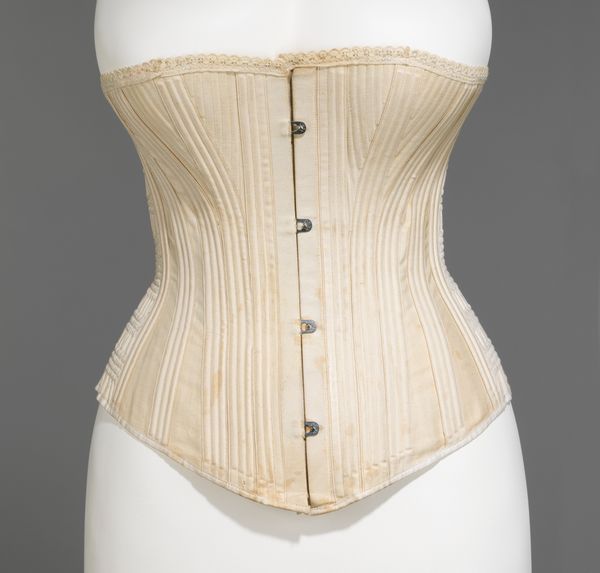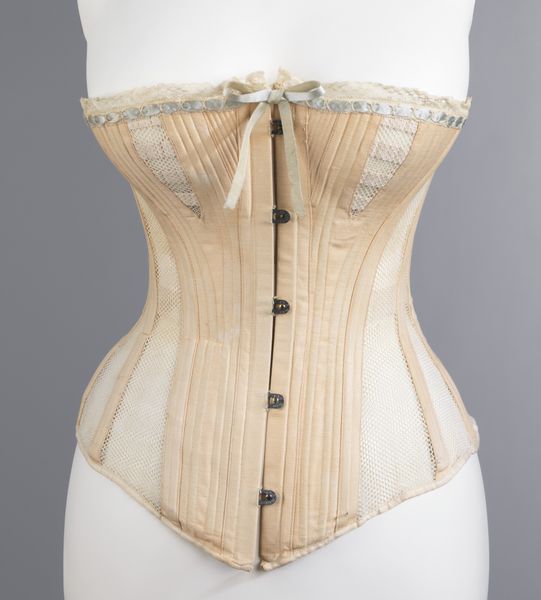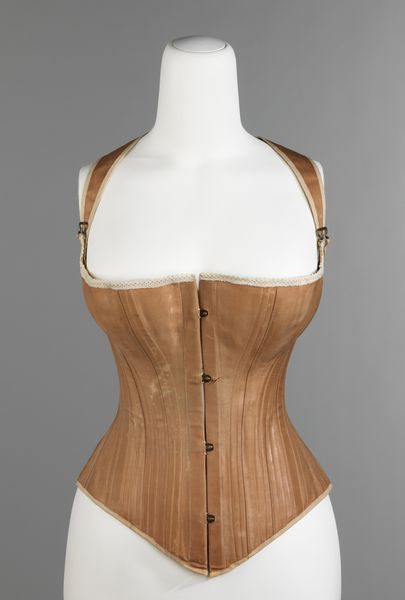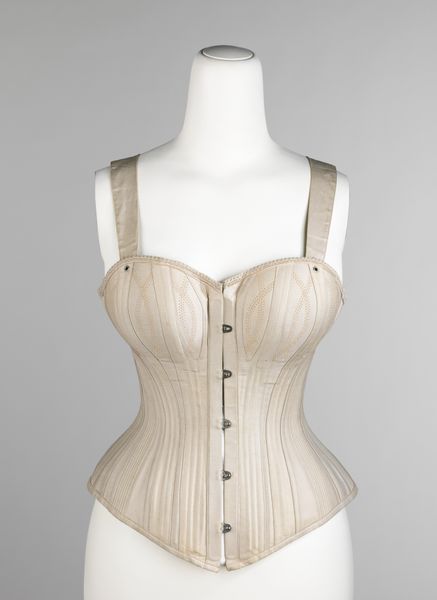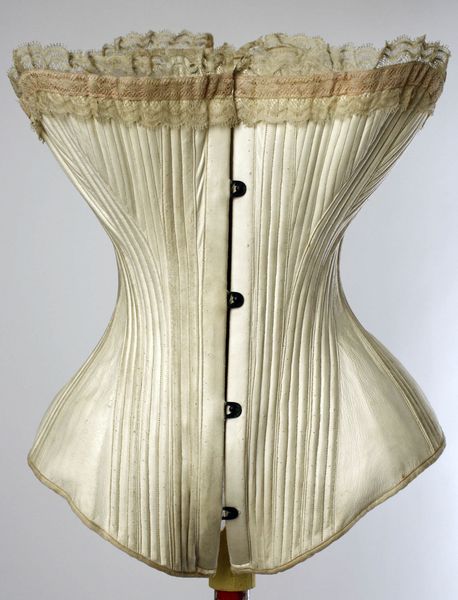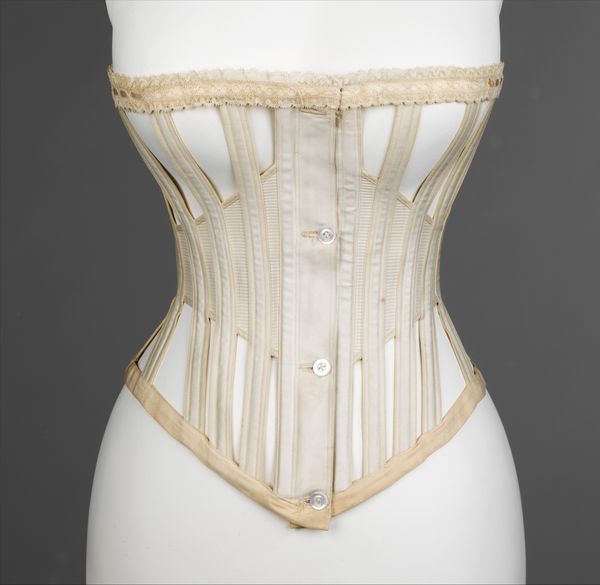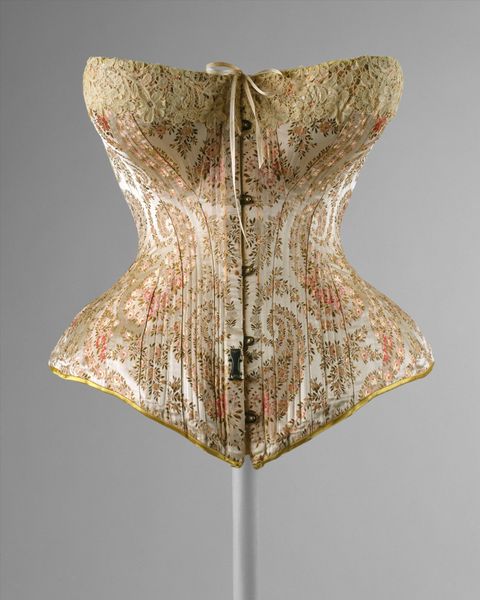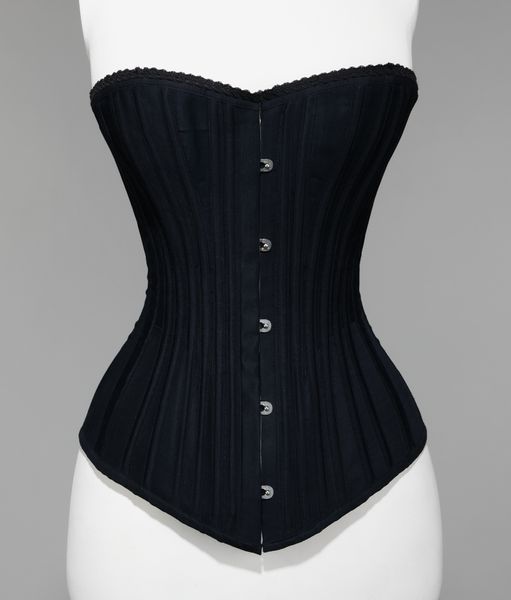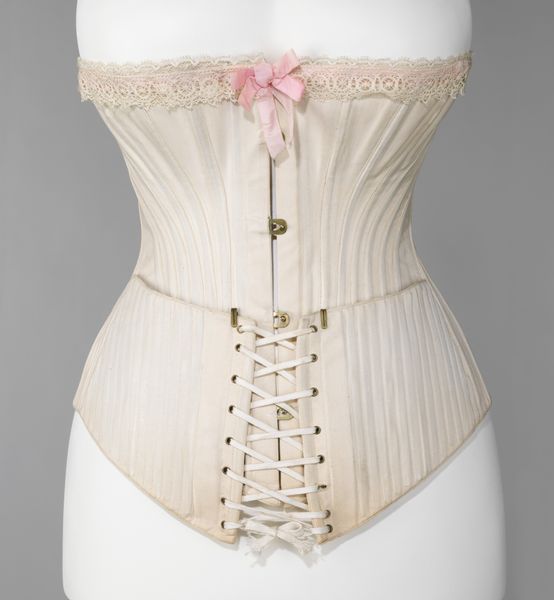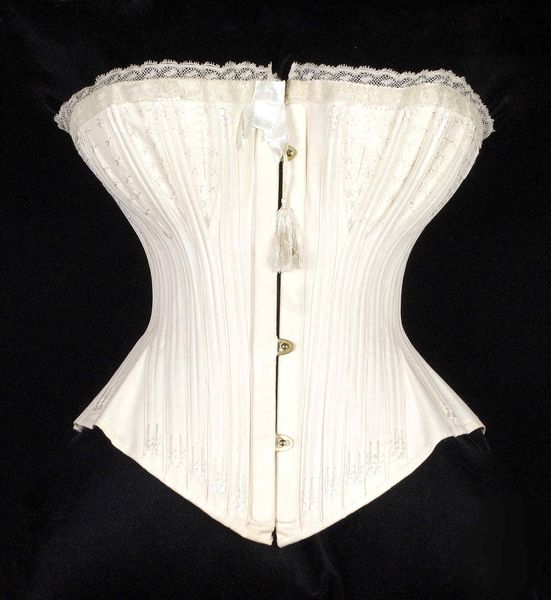
Copyright: Public Domain
Curator: What an exquisite, though somewhat unsettling, form. Editor: Indeed. We’re looking at a corset, made between 1883 and 1887. It currently resides at the Metropolitan Museum of Art. Curator: Its visual structure is immediately compelling. Note the crisp vertical lines and the stark contrast between the smooth satin and the delicate lace trim at the top. It's almost sculptural in its presentation. Editor: The corset reflects more than just aesthetics. It embodies societal constraints imposed on women during the Victorian era, specifically the expectation of an extremely slender waistline. It wasn't simply about beauty; it was about adhering to a restrictive social code. Curator: Precisely. The visual tension arising from this contrast speaks volumes about its construction and design. Notice how the light catches on the curves, accentuating its shape while the darker areas deepen to reinforce its boundaries. Editor: The corset as a tool for social compliance highlights the political dimension of clothing. The undergarments could limit mobility and affect health. So this raises questions about agency, and resistance, with items designed simultaneously as personal expression and social imposition. Curator: The craftsmanship is impeccable; the tight stitching and subtle boning creating a perfect blend of strength and elegance. Editor: Yes, and even more so it showcases a complicated cultural object; a convergence of desire and oppression. We must think about these intersections. Curator: The meticulous details offer much more than historical accuracy and I am convinced it demands continuous analysis from different perspectives to understand it as an intimate form. Editor: Indeed, each stitch embodies a narrative about gender and identity that remains powerful, yet incomplete.
Comments
No comments
Be the first to comment and join the conversation on the ultimate creative platform.

